|

Map of Europe
Map of Hungary
Map of Budapest

Hungary, facts and history in brief
Budapest, facts and history in brief
Kiskunmajsa - Hungary
'56-os Muzeum - 1956 Memorial Museum
The '56-os Muzeum, as it is known in Hungary, is the only
museum dedicated to the Hungarian Freedom Fight of 1956 in
Hungary to date and was established by Mr. Gergely
Pongrátz and the help of his family and friends in 1991.
Mr Pongrátz was the leader and hero of the Corvin
Alley (Corvin köz) resistance (one of the best
known of the battles for the defence of the
Budapest and the Freedom fight) against the
barbaric Soviet onslaught to
extinguish the Hungarians' quest for freedom.
The museum is 6 km from the town of
Kiskunmajsa, on the road to Szeged,
in the former building of a public elementary school.
Most of the exhibits, relics, documents and works
of art were purchased by Mr. Pongrátz
and his family or donated
by his former comrades.
The exhibits include some of the contemporary
arsenal, like Molotov-coctails,
a T-55 tank and many others.
Address: 6120 Kiskunmajsa, Maris puszta 244.
Phone: 77/481-765
Fax: 77/481-765
Web: http://www.56-osmuzeum.hu/
E-mail: info@56-osmuzeum.hu
Open: Mon-Sat 9-17, Sun 13-17
Entry: Free

2006
You can click on these photos for an enlargement.
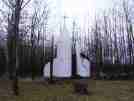 |
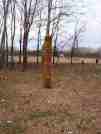 |
 |
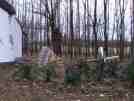 |
'56os Muzeum -
1956 Memorial Museum |
'56os Muzeum -
1956 Memorial Museum |
'56os Muzeum -
1956 Memorial Museum |
'56os Muzeum -
1956 Memorial Museum |
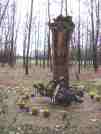 |
 |
 |
 |
'56os Muzeum -
1956 Memorial Museum |
'56os Muzeum -
1956 Memorial Museum |
'56os Muzeum -
1956 Memorial Museum |
'56os Muzeum -
1956 Memorial Museum |
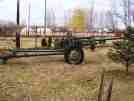 |
 |
 |
 |
'56os Muzeum -
1956 Memorial Museum |
'56os Muzeum -
1956 Memorial Museum |
'56os Muzeum -
1956 Memorial Museum |
'56os Muzeum -
1956 Memorial Museum |
 |
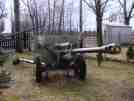 |
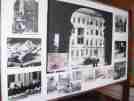 |
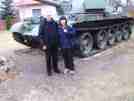 |
'56os Muzeum -
1956 Memorial Museum |
'56os Muzeum -
1956 Memorial Museum |
'56os Muzeum -
1956 Memorial Museum |
'56os Muzeum -
1956 Memorial Museum |
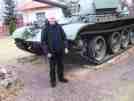 |
 |
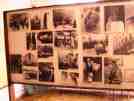 |
 |
'56os Muzeum -
1956 Memorial Museum |
'56os Muzeum -
1956 Memorial Museum |
'56os Muzeum -
1956 Memorial Museum |
'56os Muzeum -
1956 Memorial Museum |
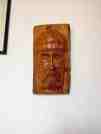 |
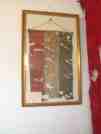 |
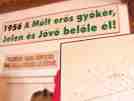 |
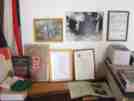 |
'56os Muzeum -
1956 Memorial Museum |
'56os Muzeum -
1956 Memorial Museum |
'56os Muzeum -
1956 Memorial Museum |
'56os Muzeum -
1956 Memorial Museum |
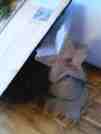 |
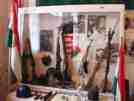 |
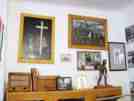 |
 |
'56os Muzeum -
1956 Memorial Museum |
'56os Muzeum -
1956 Memorial Museum |
'56os Muzeum -
1956 Memorial Museum |
'56os Muzeum -
1956 Memorial Museum |
 |
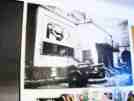 |
 |
 |
'56os Muzeum -
1956 Memorial Museum |
'56os Muzeum -
1956 Memorial Museum |
'56os Muzeum -
1956 Memorial Museum |
'56os Muzeum -
1956 Memorial Museum |

'56os Kápolna - 1956 Memorial Chapel
Across the road from the '56-os Muzeum is the
1956 Memorial Chapel, dedicated to St John Capistran,
which was also built by Mr. Gergely Pongrátz.
Featuring two towers, one of them symbolises the victorious
1956 revolution while the other smaller one the
tragic crushing of the uprising.
The Memorial Plaque there list the fallen heroes of the
Freedom Fight (both those who died during the fighting and the ones that
were executed later during the reprisals).
There are Holy Masses and Ecumenical services offered on
the last Sundays of every month.
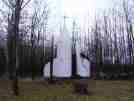 |
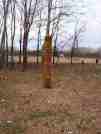 |
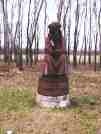 |
'56os Kápolna -
1956 Memorial Chapel |
'56os Kápolna -
1956 Memorial Chapel |
'56os Kápolna -
1956 Memorial Chapel |
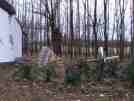 |
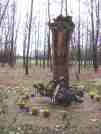 |
'56os Kápolna -
1956 Memorial Chapel |
'56os Kápolna -
1956 Memorial Chapel |

Pongrátz Gergely -
Gergely Pongrátz
Gergely Pongrátz (in Hungarian:
Pongrátz Gergely).
Born in Szamosújvár, 1932,
and died Kiskunmajsa, 2005,
he was a legendary freedom fighter during the
Hungarian Revolution of 1956.
He was the commander of one of the strongest
points of resistance, the
Corvin Alley (Corvin köz), between
1st November to 9th November.
Under his command, the Corvin Alley
fighters destroyed at
least a dozen Soviet tanks and resisted
several waves of attack.
After the defeat, he escaped and lived
mostly in American exile until 1991.
After his return to Hungary, he often
raised his voice against
the leftist governments.
He founded a new right-wing nationalist political party,
Jobbik Magyarországért
Mozgalom (Movement for a Better
Hungary), which is still active today, however
it's quite a weak political force.
He was also the president of Magyarok
Világszövetsége
(World Association of Hungarians).
Pongrátz Gergely founded the first museum of the
1956 Revolution in 1991, but it was closed in 1995
as the local authorities wished to use the
building for a different purpose.
He then purchased and renovated an old school building
in Kiskunmajsa and turned it into the only museum
of the 1956 Hungarian Freedom Fight in Hungary.
Pongrátz Gergely died on the yard of the
museum, suffering a heart attack.
Several high-ranking state officials, including the
President of the Republic of Hungary,
were present at his funeral.
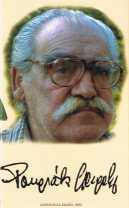
Pongrátz Gergely - Gergely Pongrátz
(Scanned from the cover of his biography
with many thanks)

Pesti srác -
Budapest's Kid
Excerpted from Wikipedia,
the free encyclopedia
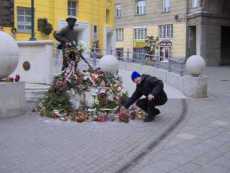
2 Pesti srác - 2 Budapest's Kids
(The author - in the beanie - placing a candle - is one too)
Paul Penczner - Perhaps his most compelling
artwork is "Falling Stars".
This masterpiece is an East European counterpart
to Picasso's Guernica.
The theme of this painting is the history of Twentieth
Century Europe from a Hungarian point of view.
Images include the Treaty of Trianon, representing the
dissolution of the Austro-Hungarian Empire at the end
of World War I.
Also depicted are scenes of the rape of Hungarian women
by invading Soviet soldiers during World War II.
There is a biographical reference, picturing the Soviet T34
tank which wounded Penczner in a battle near Cegled.
The figure of a one-legged man symbolizes all
soldiers who fought in wars.
Included are flags of Allied and Axis powers who
participated in the war.
A self-portrait image is seen in the center,
representing a signature to the work.
A prominent theme is the Hungarian Revolution of 1956.
In the lower right, we see a commemoration of Pesti Srác
(Hungarian colloquialism meaning "Boy(s) of Budapest").
This represents the young men who fought against the
overwhelming Soviet invasion of Hungary.
Also represented is one of the many thousands
of tanks sent in by the Soviets during that conflict.
- o O o -
The following quote comes from Hungarian art historian, Dr.
Lilla Szabó, who is author of
the book, 'Penczner Versus Picasso'.
"He depicts man-made stars, at a time when ideologies
were raising their own stars up to the heavens; when in
wars started for the sake of power, people counted for
little and became little more than suffering mass,
when peoples and nationalities were killed and exterminated
in the name of ideas, those stars that heaped
shame on the whole of humanity.
It is not the stars that light up the way, but the stars
that lead to Hell that are shown..."
- o O o -
P.s. Jesus and the Twelve Apostles
Penczner created a series of drawings depicting
Jesus and the twelve Apostles.
The likenesses were said to have been based on
ancient documents and scriptures.
This work was accepted by Pope John Paul
II for the Vatican in Rome.
- o O o -
Author's note
The Pesti srác - I would translate as the Budapest Kid -
is a symbol of an anonymous, average youth of Budapest,
who took up arms, usually sequestered from the enemy,
to fight an unquantifiable, overwhelming and superior
force, to defend his country's briefly won freedom, his
city, Budapest and his beloved country with his own blood
if necessary.

Corvin köz - Corvin Lane
"where boys grew up instaneously and took on tanks"
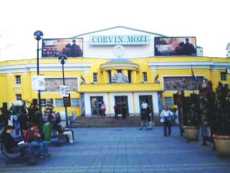 |
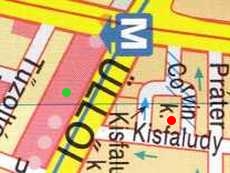 |
Corvin köz - Corvin Lane
Corvin mozi - Corvin Cinema |
Corvin köz térkép - Corvin Lane map
Red dot Corvin Cinema
Green dot Killian Barracks |
Corvin Cinema and its surroundings very quickly became the
base for some of the fiercest battles in the early
days of the Hungarian Freedom Fight.
...."Natural fortress
....The (Corvin) cinema and its surroundings were strategically
an almost perfect place, in terms of both attack and defence.
The neighbouring buildings overlooked
the important Üllõi út -
Great Ring Road junction - and it was from these that attacks
were to be launched against Soviet tanks passing below.
At the same time, the passageway around the cinema and
its tall, overshadowing, surrounding buildings provided
excellent defence, as it could only be accessed via a few
relatively narrow alleyways, thus being virtually
impenetrable by attacking forces.
Furthermore, there happened to be a petrol pump at the
back of the cinema, which provided unlimited supplies of
fuel for Molotov cocktails - bottles filled with fuel,
a piece of partly fuel-soaked rag stuffed into the neck
of the bottles along with a cork or stopper, the rag
being lit before the bottles were thrown.....
....According to some.... on 25 October there were
only 40-50 people involved....
the numbers gradually grew, such that three days later
there were a possible 800, and by the following day,
after which the fighting ceased here for five days,
there were around 1,000-1,200....
....Who were these people? This is a question which greatly
interested the propagandists and
historians of the Kádár era,
who were at pains to smear the "Corvin gang" as consisting
almost entirely of "riff-raff" and "criminals and prostitutes"
who were "under the leadership of
Horthyite officers and fascists.
Later they would be regarded as lumpenproletarians, characters on
the shady margins of society, in and out of work, in and out of
crime - definitely not.... they were.... "real" workers in
the classical (stereotypical, idealised) Marxist sense....
....Among them there were indeed some former fascists, but
there were also members of the (up to then ruling Communist)
Hungarian Workers' Party and of the Hungarian Army. Writing
in the daily Magyar Hírlap in 2003, Eörsi summed up the
majority of rebels, at Corvin and elsewhere, as having been
the slandered, embittered and humiliated victims
of the Stalinist regime....
....At first the Corvin fighters only had small arms
such as pistols and rifles, plus a few machine guns.
These were later supplemented by different types of arms,
including some artillery pieces retrieved from
Soviet tanks, armoured vehicles and lorries, which
they managed to destroy or put out of action.....
....Almost all participants and commentators have
noted the extreme youth of the rebel fighters.
One of the leading participants, Gergely Pongrátz,
was himself just 24, but in his memoir, Corvin köz,
he indicates that around 29 October 80% of his fellow
fighters were under 20 years of age,
some of them as young as 13-14....
....As a monument to this youthful rebellion, the
statue of a young boy, weapon in hand, today stands
in front of the Corvin Cinema.
The work of Lajos Gyõrfi and entitled '56-os Pesti
Srác (Pest Lad of '56), it appeared here in 1996,
marking the 40th anniversary of the Uprising.
The image of the young street fighter has been
cultivated into heroic status, as the statue
in front of the cinema clearly indicates....
British writer Bob Dent has lived
in Budapest for twenty years.
The above is an edited extract from his book
Budapest 1956 - Locations of Drama.

"1956 was the first tear in the iron curtain and
a momentous historical event with broad
implications lasting through to today.
As the world watched, Hungarians of all walks of
life rose up, fought the occupiers against
overwhelming odds, and left a chink in the Soviet
empire that ultimately contributed to the events
of 1989 and 1990".
American Hungarian Federation - Memorial

Maléter Pál - Paul Maléter
Excerpted from Wikipedia, the free encyclopedia
Pál Maléter (4 September 1917-June 16, 1958) was born to
Hungarian parents in Eperjes, a city in the northern part
of Historical Hungary, today part of Slovakia.
He was the military leader of the 1956 Hungarian Revolution.
Maléter studied medicine at the Charles University, Prague,
before moving to Budapest in 1938,
going to the military academy there.
He fought on the Eastern Front, until captured by the Red Army.
He became a Communist, trained in sabotage and was sent back
to Hungary, where he was noted for his courage and daring.
In 1956 he was commander of an infantry
division stationed in Budapest.
He was sent to suppress the rebellion, but on making contact
with the insurgents during the Hungarian Uprising he decided
to join them, helping to defend the Killián Barracks.
He was the most prominent member of the
Hungarian military to change sides.
As the chief military presence on the Freedom Fighters'
side he came into contact with the new government,
and enjoyed a rapid promotion from Colonel to General,
and on 29 October was appointed Minister of Defense.
On 3 November he went to Tököl, located near Budapest,
to negotiate with the Soviet military forces based there.
The following day during discussions, against
international law, Maléter was arrested and imprisoned.
He was executed along with Imre Nagy and others in a
Budapest prison on 16 June 1958, on charges of attempting
to overthrow the Hungarian People's Republic.
In June 1989, on the anniversary of their deaths,
Imre Nagy, Pál Maléter, three others who had died
in prison and a sixth, empty coffin symbolising all those
who had died, were formally reburied with full honours.
A pine has been named after him - ironically,
given Maléter's height, a dwarf variety.
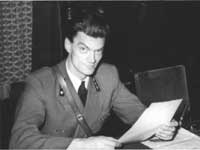
Maléter Pál - Paul Maléter

Nagy Imre - Imre Nagy
Excerpted from Wikipedia, the free encyclopedia
 Imre Nagy (Hungarian: Nagy Imre)
(June 7, 1896 - June 16, 1958)
was a Hungarian politician, appointed Prime Minister
of Hungary on two occasions.
Nagy's second term ended when his non-Soviet-backed
government was brought down by Soviet invasion in the
failed Hungarian Revolution of 1956, resulting in
Nagy's execution on charges of
treason two years later.
Imre Nagy (Hungarian: Nagy Imre)
(June 7, 1896 - June 16, 1958)
was a Hungarian politician, appointed Prime Minister
of Hungary on two occasions.
Nagy's second term ended when his non-Soviet-backed
government was brought down by Soviet invasion in the
failed Hungarian Revolution of 1956, resulting in
Nagy's execution on charges of
treason two years later.
Nagy (pronounced "nodj"), was born in Kaposvár, to a
peasant family and was apprenticed to a locksmith,
before enlisting in the Austro-Hungarian Army during
World War I and serving on the Eastern Front.
He was taken prisoner in 1915.
He then became a member of the Russian Communist
Party, and joined the Red Army.
In 1918, he became a member of the detachment that
guarded the imprisoned ex-emperor Nicholas
II and his family in Yekaterinburg.
According to documents of the Revolutionary Staff of
the Ural District of the Cheka, he was member of
the execution squad that murdered them on
July 17, 1918, but some historians believe this to
be an apocryphal story concocted by Soviet intelligence
after his split with Moscow in 1956.
Nagy returned to Hungary after World War I and
served in the short-lived Bolshevik
government of Béla Kun.
In 1929, he went to the Soviet Union, where he
engaged in agricultural research, and also worked
in the Hungarian section of the Comintern.
During the time Nagy spent in the Soviet Union,
many non-Russian communists were arrested,
imprisoned and executed by the Soviet government.
In particular, Béla Kun, who led the Hungarian
Soviet Republic, disappeared in the mid-1930s.
This incident spurred panic among Hungarian communist
émigrés, as documented
in Julius Hay's Born 1900.
After the war Nagy returned to Hungary and served in
the Communist government, as Minister of
Agriculture and in other posts.
After two years as Prime Minister (1953-1955),
during which he promoted his "New Course" in
Socialism, Nagy fell out of favour
with the Soviet Politburo.
He was deprived of his Hungarian Central Committee,
Politburo and all other Party functions and on April 18,
1955, he was sacked as Prime Minister.
Nagy became Prime Minister again, this time by popular
demand, during the anti-Soviet revolution in 1956.
On 31 October, he announced Hungary's withdrawal from
the Warsaw Pact and, on 1 November, he appealed through
the UN for the great powers, such as the United States
and the United Kingdom, to recognize Hungary's status
as a neutral state.
He also moved toward a multiparty
political system.
 When the revolution was crushed by the Soviet invasion
of Hungary, Nagy, with a few others, was given
sanctuary in the Yugoslav Embassy.
When the revolution was crushed by the Soviet invasion
of Hungary, Nagy, with a few others, was given
sanctuary in the Yugoslav Embassy.
In spite of a written safe conduct of free passage by
Kádár, on 22 November, Nagy was arrested by the
Soviet forces as he was leaving the Yugoslav Embassy,
and taken to Snagov, Romania. Subsequently, the
Soviets returned him to Hungary, where he was secretly
charged with organizing to overthrow the Hungarian
people's democratic state and with treason.
Nagy was secretly tried, found guilty, sentenced to
death and executed by hanging in June, 1958.
His trial and execution were made public only
after the sentence was carried out.
He was buried along with others in a distant
corner (section 301) of the Municipal
Cemetery outside Budapest.
During the time when the Communist leadership of
Hungary would not mark or allow access to his
true burial place, a cenotaph in his honor was
erected in Père Lachaise Cemetery in Paris.
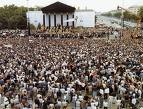 In 1989, Imre Nagy was rehabilitated and his remains
reburied in the same plot after a funeral organized
in part by opponents of the country's communist regime.
In 1989, Imre Nagy was rehabilitated and his remains
reburied in the same plot after a funeral organized
in part by opponents of the country's communist regime.
Over 100,000 people are estimated to
have attended Nagy's reinterment.
The collected writings of Nagy, most of which he wrote
after his dismissal as Prime Minister in April 1955,
were smuggled out of Hungary and published in the West
under the title "Imre Nagy on Communism."

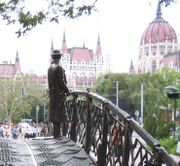 Nagy was married with one daughter,
Erzsébet (m. Vészi).
Nagy was married with one daughter,
Erzsébet (m. Vészi).
He did not object to his daughter's romance and eventual
marriage to a Protestant minister, attending their
religious wedding ceremony in 1946
without Politburo permission.
In 2003 and 2004, the Hungarian director
Márta Mészáros
produced a film based on Nagy's life after the
revolution, entitled The Unburied Dead.

Torn From The Flag
A English language, full length documentary of
The Hungarian Revolution and Freedom Fight of 1956
By producer Klaudia Kovács
"... we cannot be generous with any other but our own blood."
Albert Camus
"The Hungarian Revolution and Freedom Fight of 1956 is
one of the most remarkable events in modern history.
This uprising had important influences
on the ending of the Cold War.
It was the first important indicator of, and a
catalyst for, the future downfall of communism,
and it initiated a process that culminated three
decades later with the fall of the Berlin Wall and
the demise of the Soviet Union.
This event was so important that the United Nations kept
the "Hungarian Question" on its agenda for 7 years".
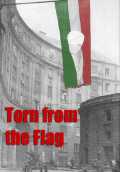
Torn from the Flag poster

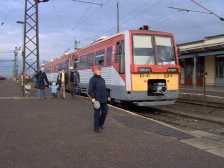 |
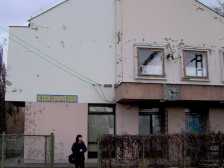 |
| On our way to Kiskunmajsa |
Kiskunmajsa Station & Hui Chin |
The day Hui Chin and I went to visit the
'56-os Muzeum - 1956 Memorial Museum - we did not
have the best of days.
We left Budapest early and had to change trains, involving
waiting and other inconveniences associated with it.
We were not sure exactly where the museum was in
Kiskunmajsa.
I naively assumed it would be somewhere in the township,
but it turned out that we were in for a surprise.
We couldn't see anybody around to ask, so we went
in a pub about three hundred metres from
the station to find our bearings.
There were quite a few trucks parked all around the
outside of the pub and on entering we found the
relatively small place rather crowded.
So I went up to the bar to ask about the museum.
The lady referred my question to her customers and
one of the truck drivers broke the news to me that
the museum is 6 km from the town centre and the centre
is more than 2 km from the pub.
I was praying to myself that one of the drivers would
volunteer to take us there, but
unfortunately there weren't any takers,
so off we went looking at a walk of about 8 km.
A lady in the town centre told us there is bus that will
stop just outside of the museum if we ask the driver,
in about two hours time.
It was time for refreshments and getting some money.
The local Banks would only take local credit cards
and Master Cards only, one sending us to the other in
turn, until one suggested trying the supermarket
which we did without any success.
We had hardly enough money for the bus fares.
The bus driver told us we'll have a
returning bus in about a hour's time, not
giving us much time to browse in
and around the museum.
The young lady in charge was ready to
take us across the road to shows us the beautiful
Chapel after we had rushed around looking at and
photographing the familiar, memorable exhibits.
Explaining to her that we had to catch the next bus,
we unfortunately had to forego visiting the chapel.
We didn't even have enough money to buy a couple of
books as a memento of the great man Gergely Pongrátz
and his heroic fight, against such a overwhelming force.
The following hour and half we had to wait for a bus
that never turned up (or which we had already missed) and
were trying to hail a ride into town, until
a kind man took pity on us and picked us up.
Good man, if you happen to read this - thank
you very much - God bless you and your family.
(I hope you will read this sometime. Thanks again).
In town, well, we didn't have enough money
for refreshments and after we walked to the station
we had to wait about hour and half, or two.
We returned to Budapest late, hungry and tired.
Not one of our best days, for sure.

Site Index
Back to Top
Photos Index
Thanks for coming, I hope you
have enjoyed it, will recommend
it to your friends, and will come
back later to see my site developing
and expanding.
I'm trying to make my pages enjoyable and trouble free
for everyone, please let me know of any mistakes or
trouble with links, so I can fix any problem as soon
as possible.
These pages are best viewed with monitor
resolution set at 640x480 and kept simple
on purpose so everyone can enjoy them
across all media and platforms.
Thank you.
Webmaster

|
















 Imre Nagy (Hungarian: Nagy Imre)
(June 7, 1896 - June 16, 1958)
was a Hungarian politician, appointed Prime Minister
of Hungary on two occasions.
Nagy's second term ended when his non-Soviet-backed
government was brought down by Soviet invasion in the
failed Hungarian Revolution of 1956, resulting in
Nagy's execution on charges of
treason two years later.
Imre Nagy (Hungarian: Nagy Imre)
(June 7, 1896 - June 16, 1958)
was a Hungarian politician, appointed Prime Minister
of Hungary on two occasions.
Nagy's second term ended when his non-Soviet-backed
government was brought down by Soviet invasion in the
failed Hungarian Revolution of 1956, resulting in
Nagy's execution on charges of
treason two years later. When the revolution was crushed by the Soviet invasion
of Hungary, Nagy, with a few others, was given
sanctuary in the Yugoslav Embassy.
When the revolution was crushed by the Soviet invasion
of Hungary, Nagy, with a few others, was given
sanctuary in the Yugoslav Embassy.  In 1989, Imre Nagy was rehabilitated and his remains
reburied in the same plot after a funeral organized
in part by opponents of the country's communist regime.
In 1989, Imre Nagy was rehabilitated and his remains
reburied in the same plot after a funeral organized
in part by opponents of the country's communist regime. 
 Nagy was married with one daughter,
Erzsébet (m. Vészi).
Nagy was married with one daughter,
Erzsébet (m. Vészi). 




